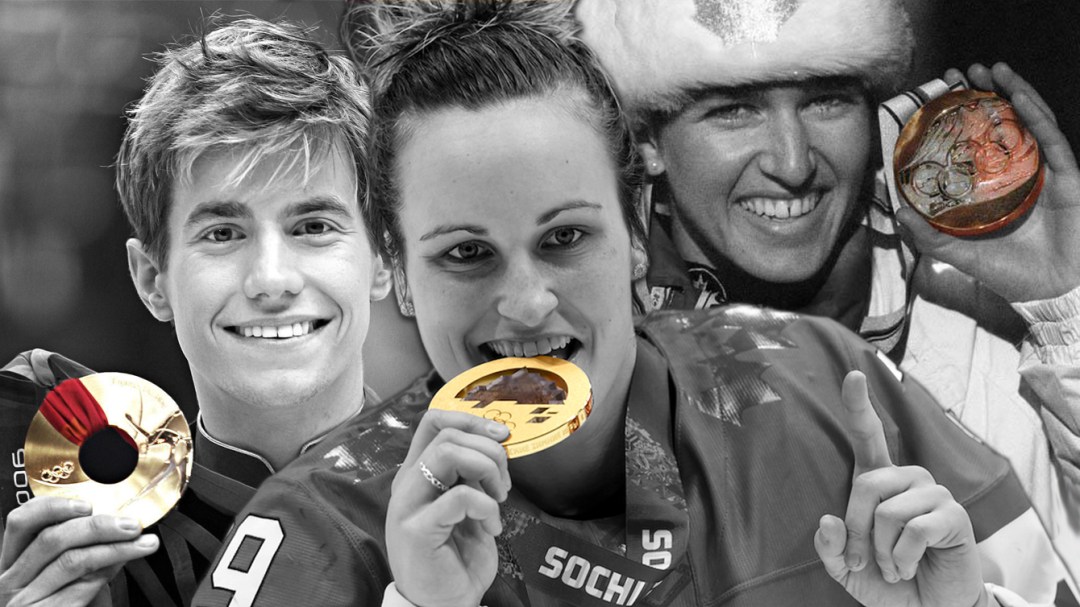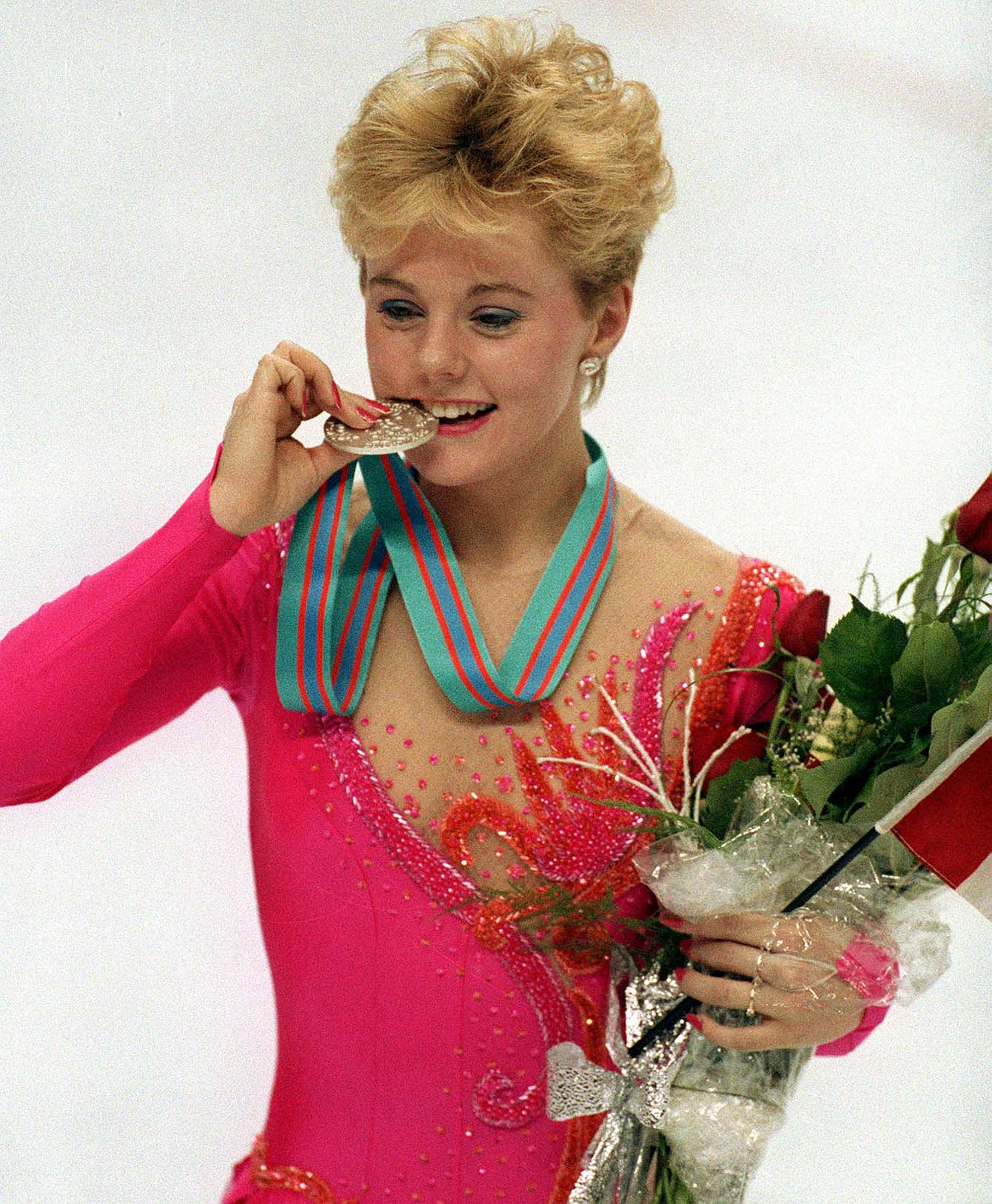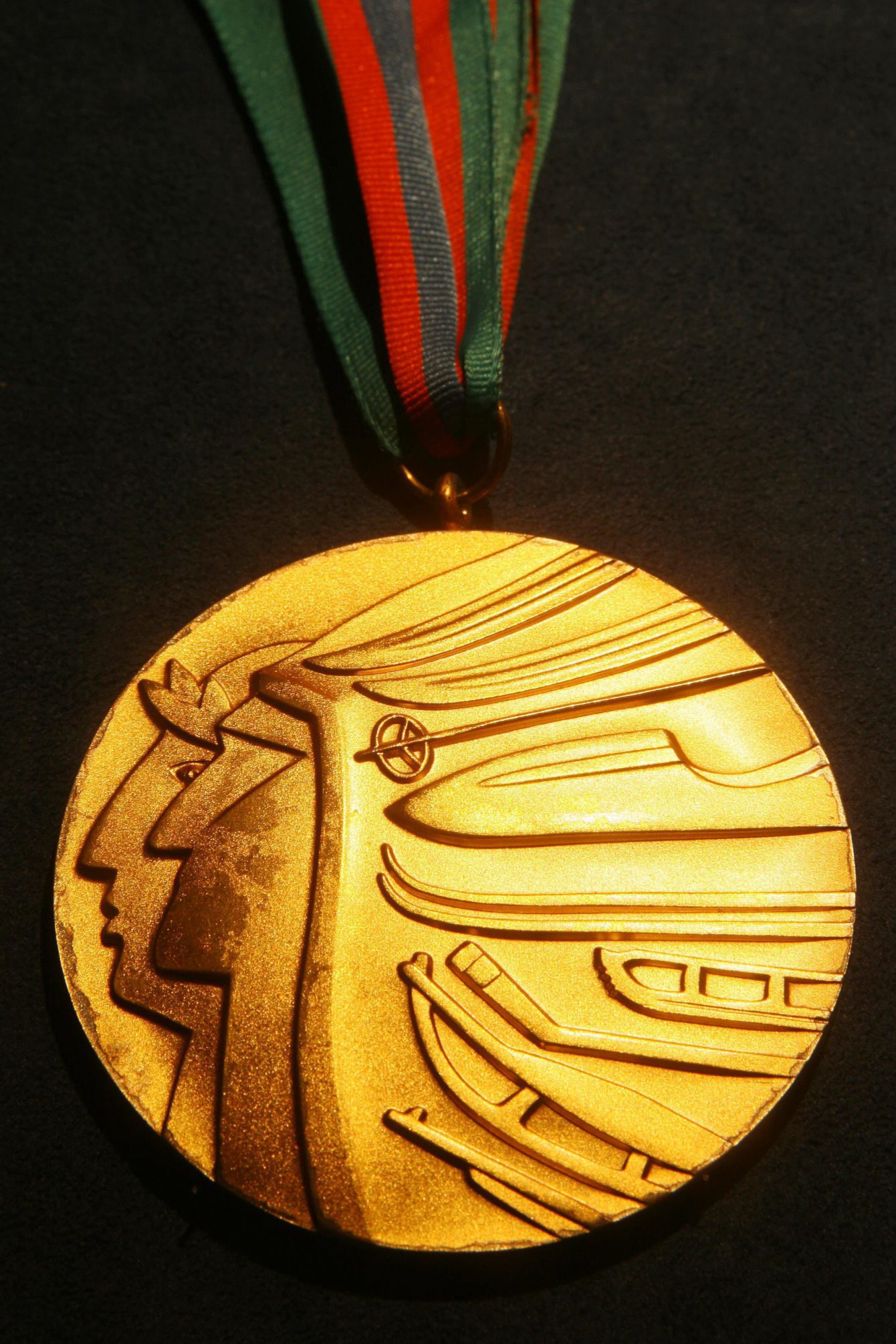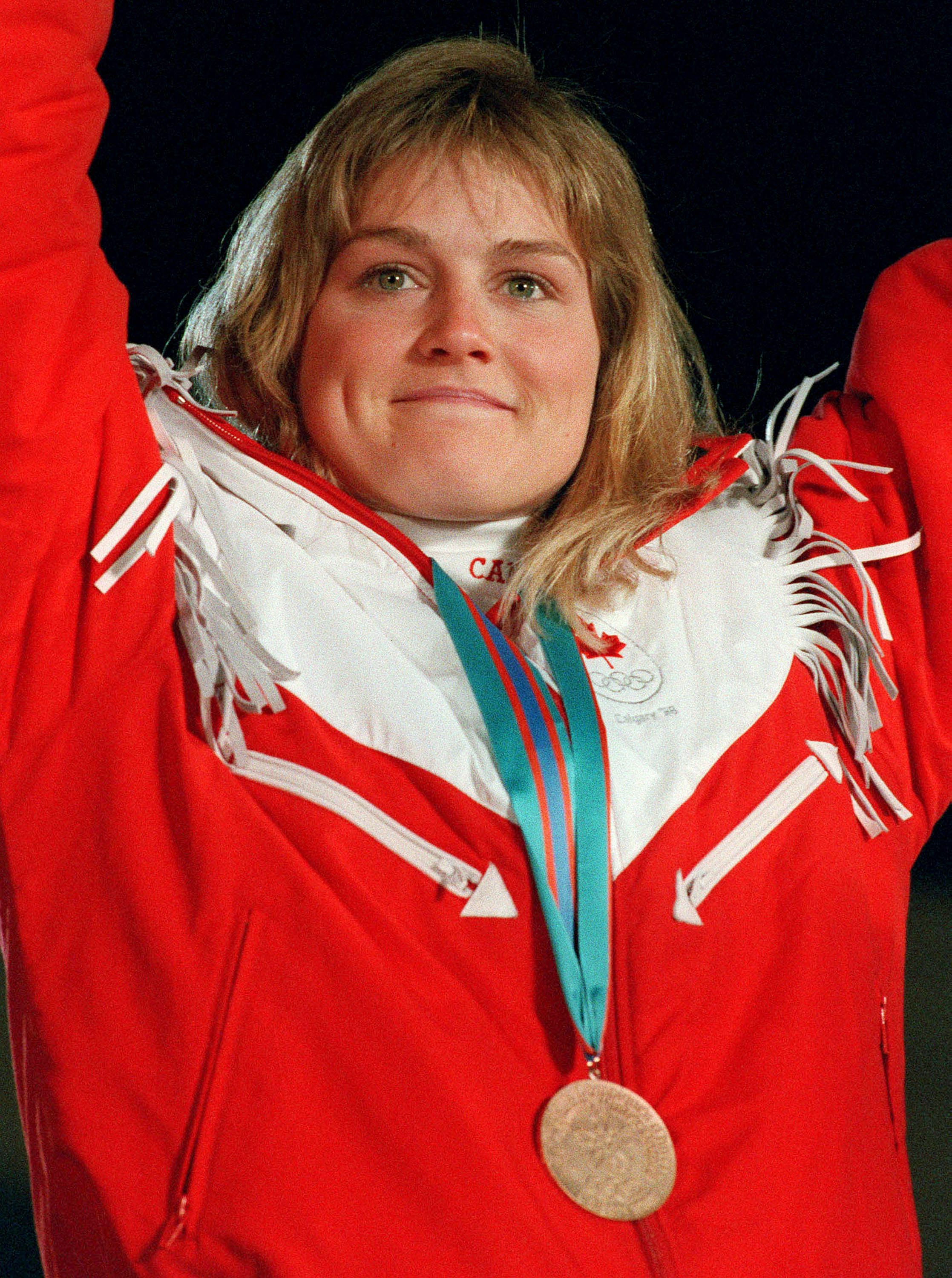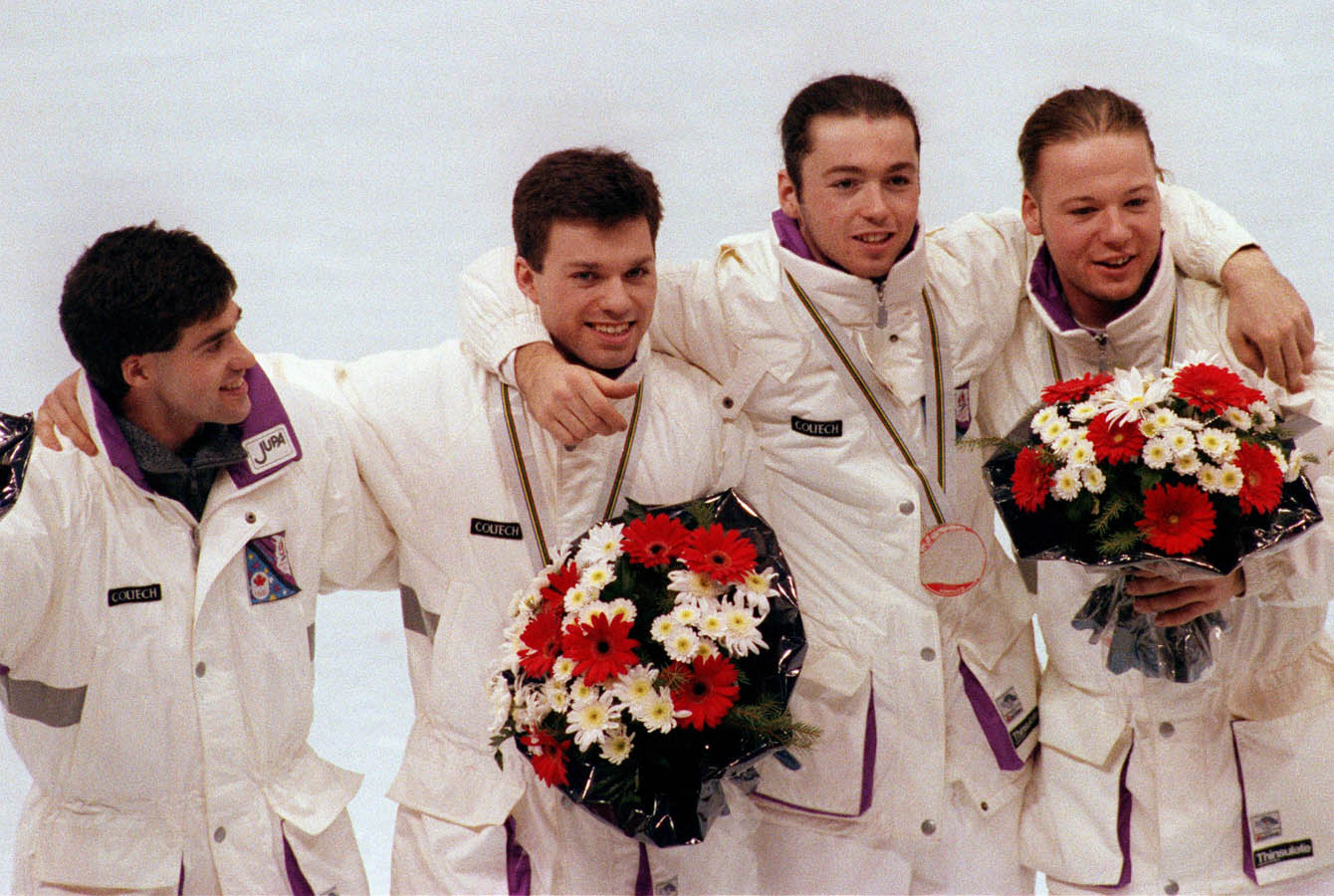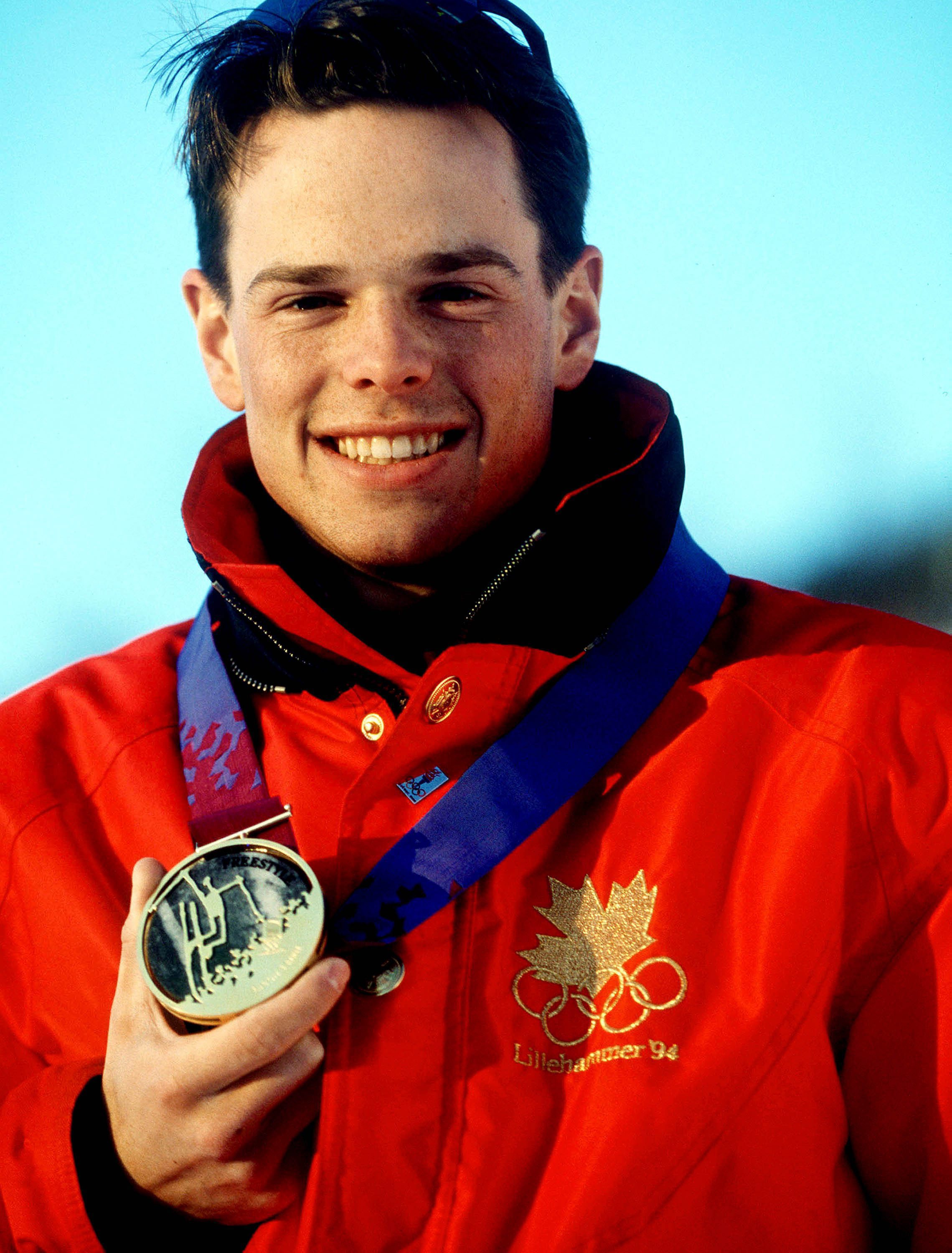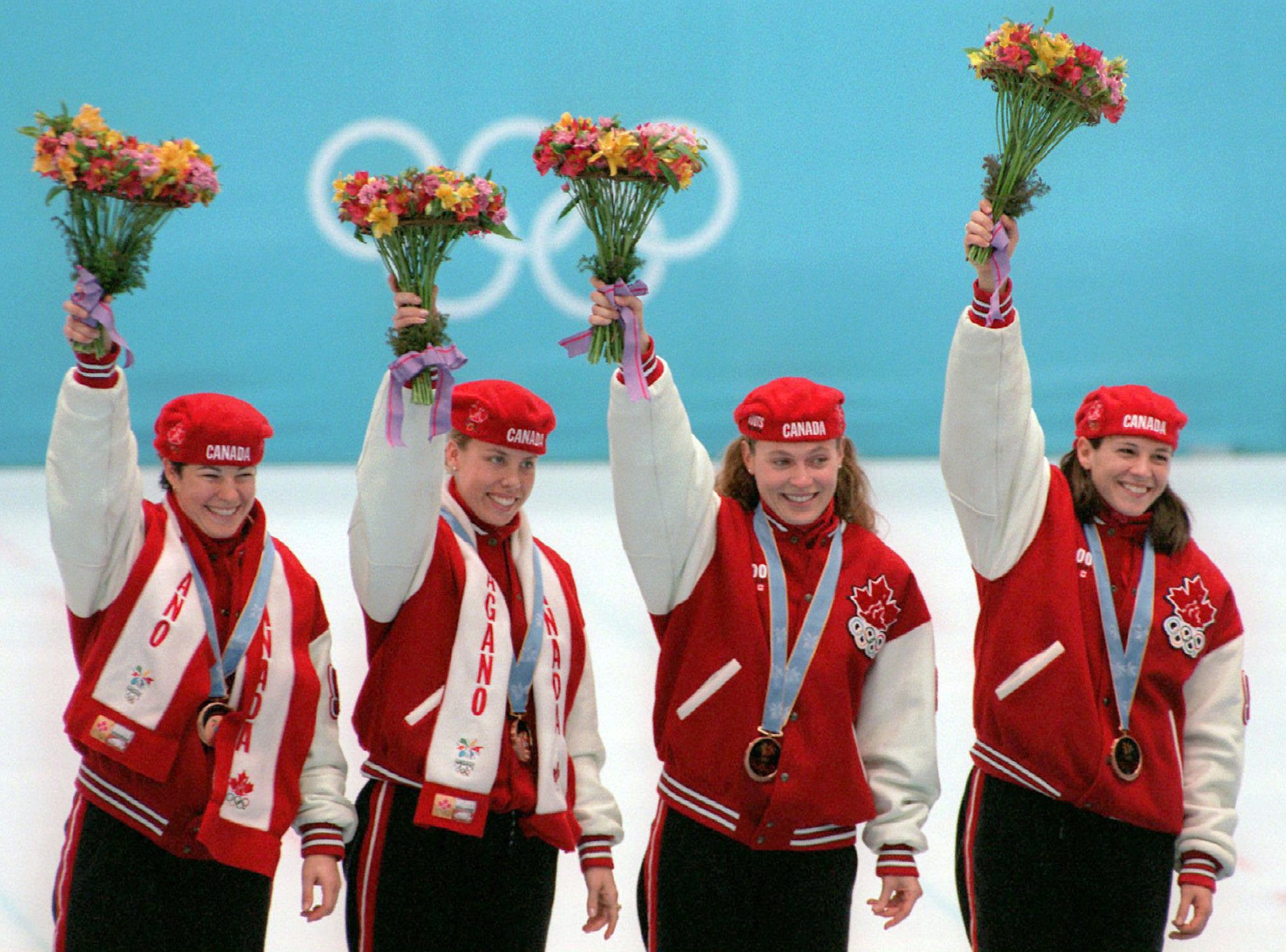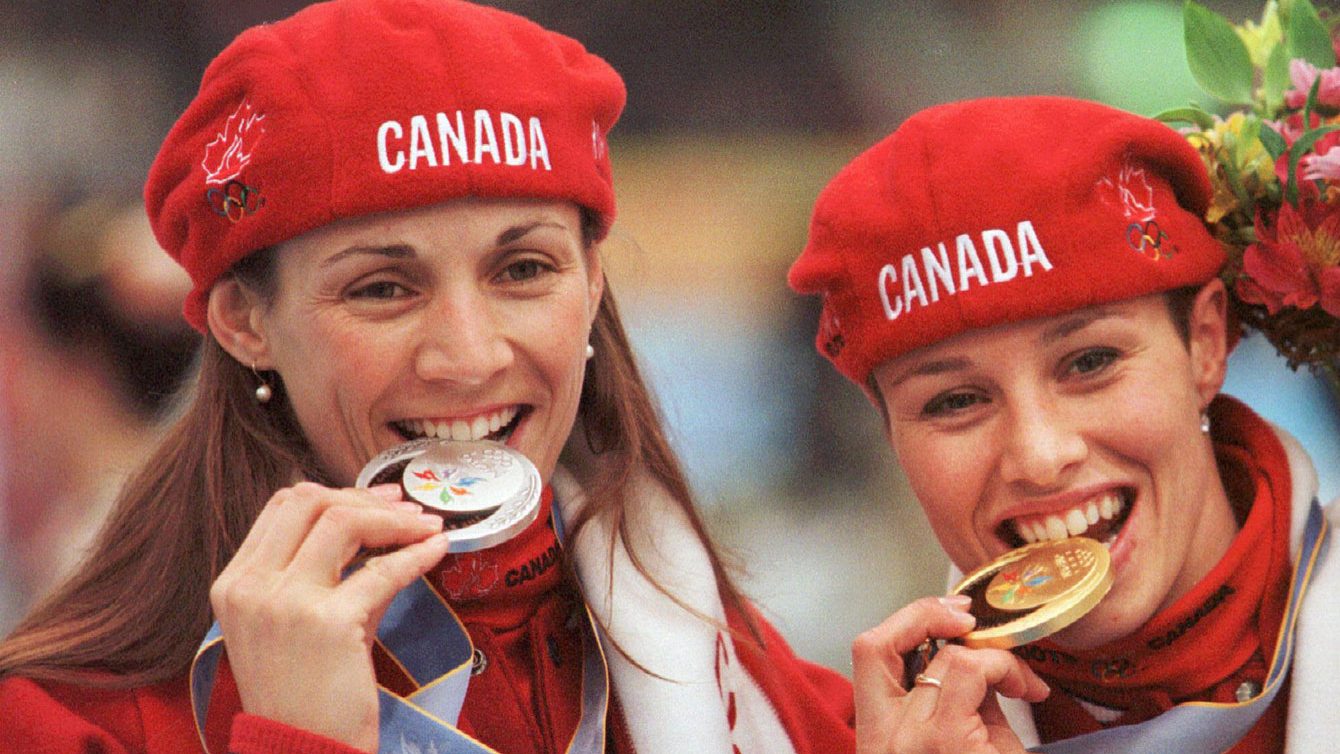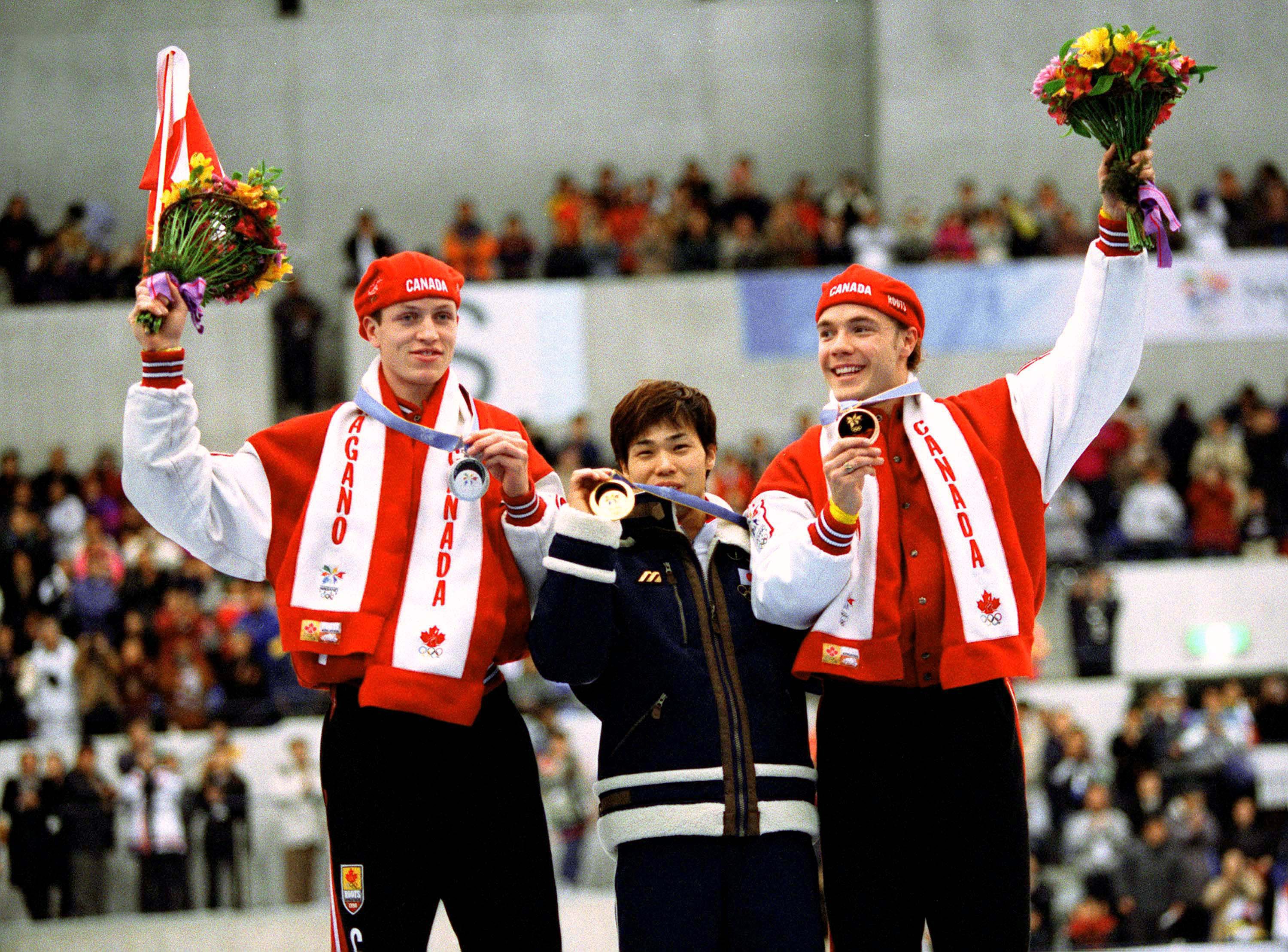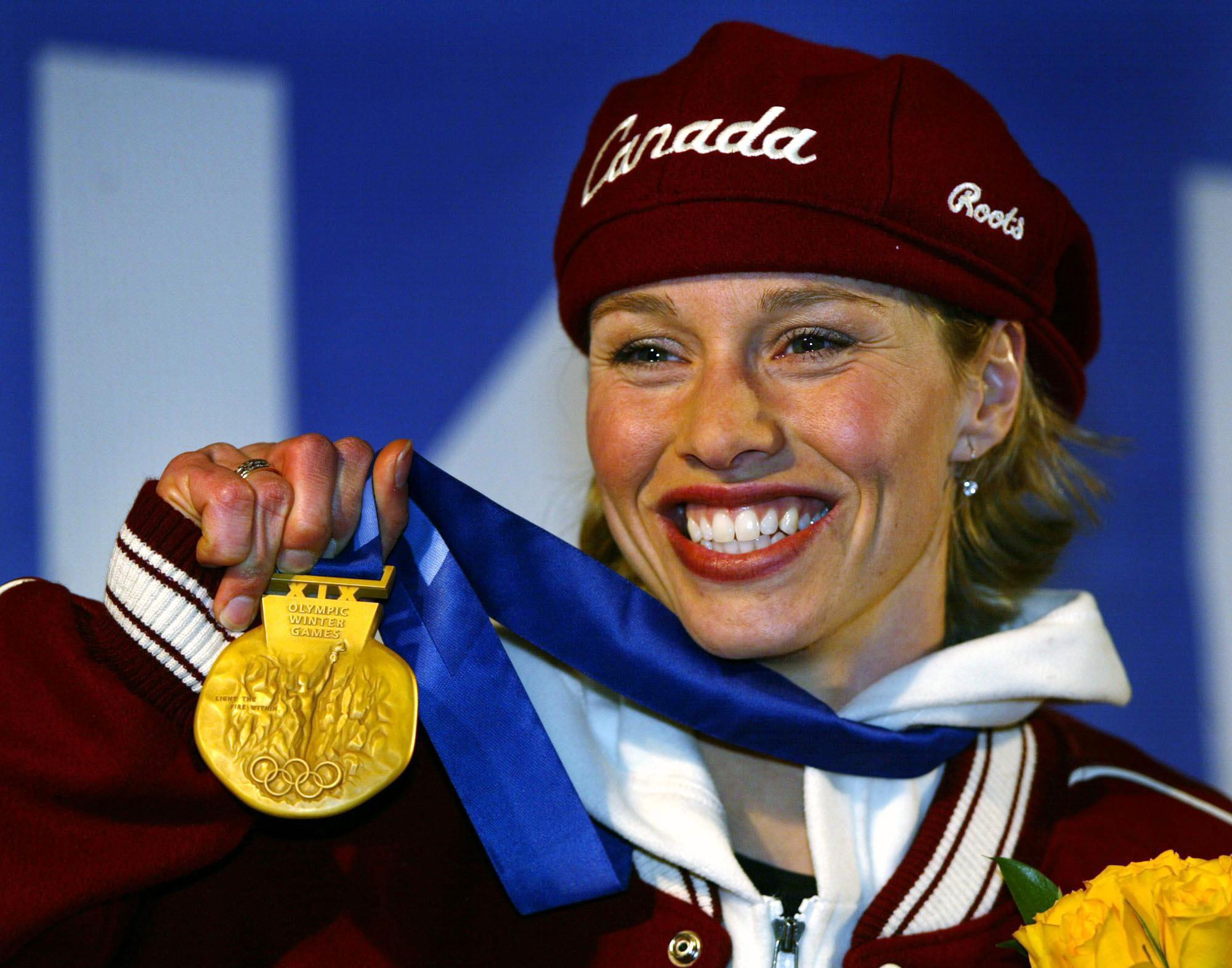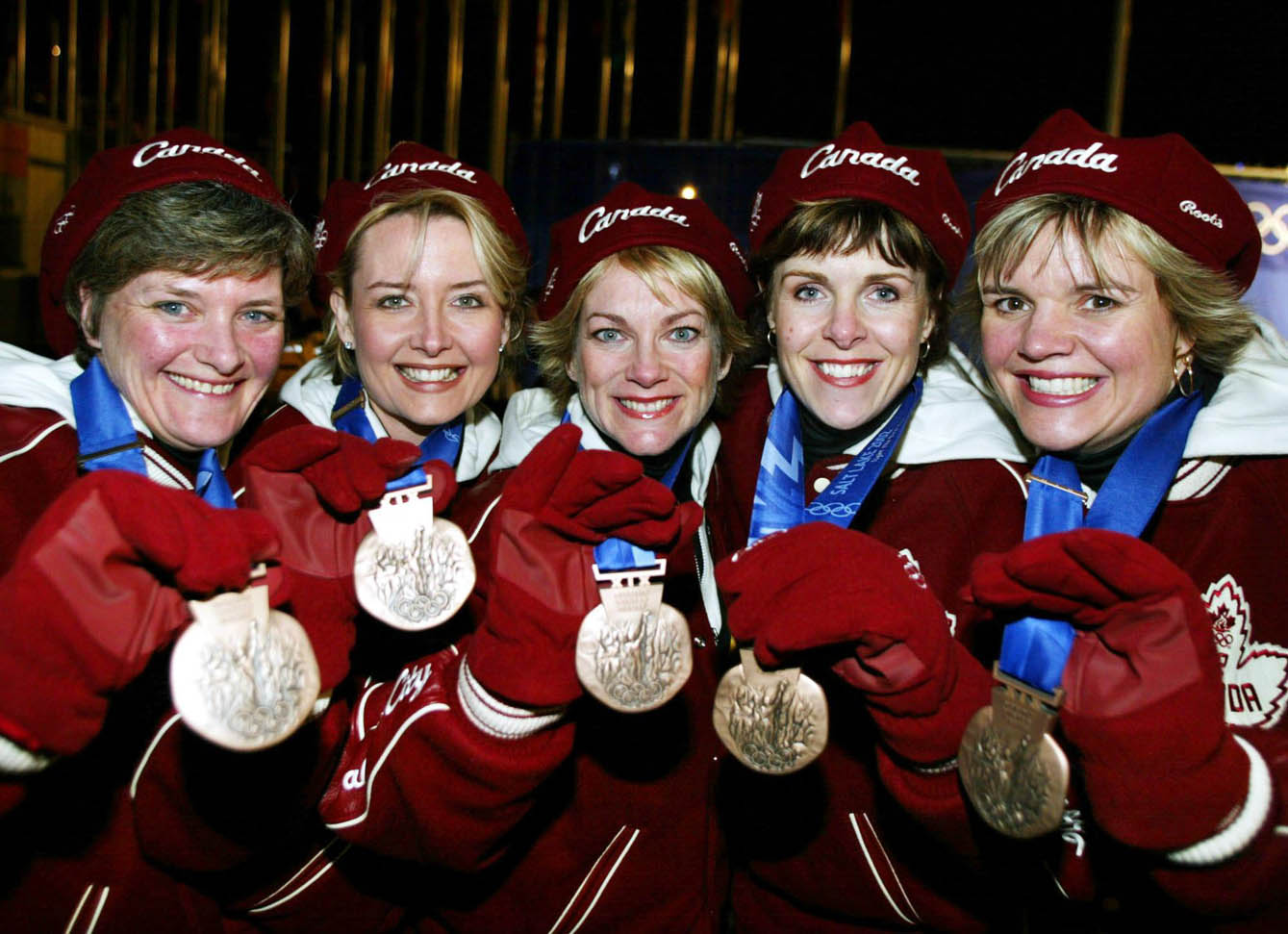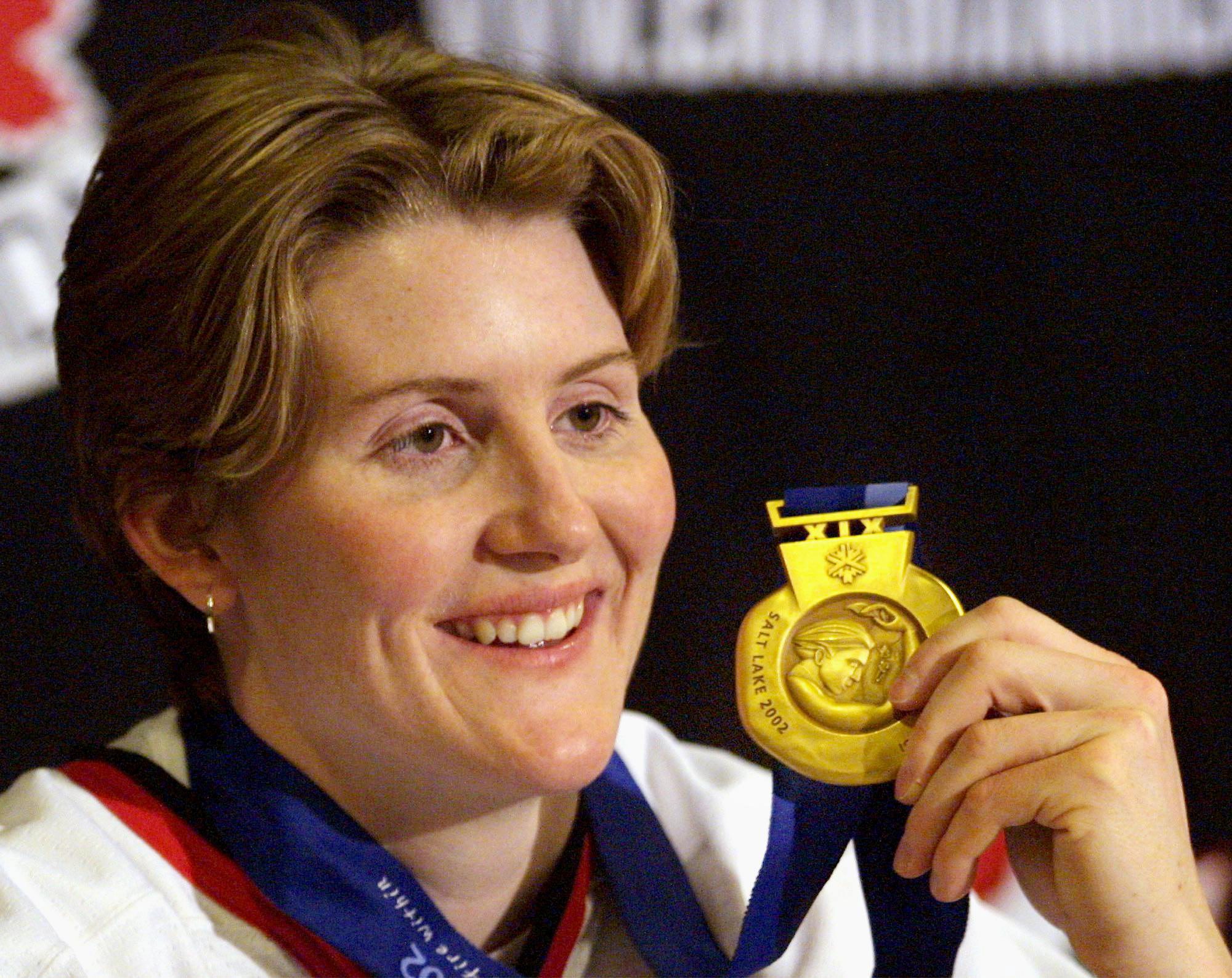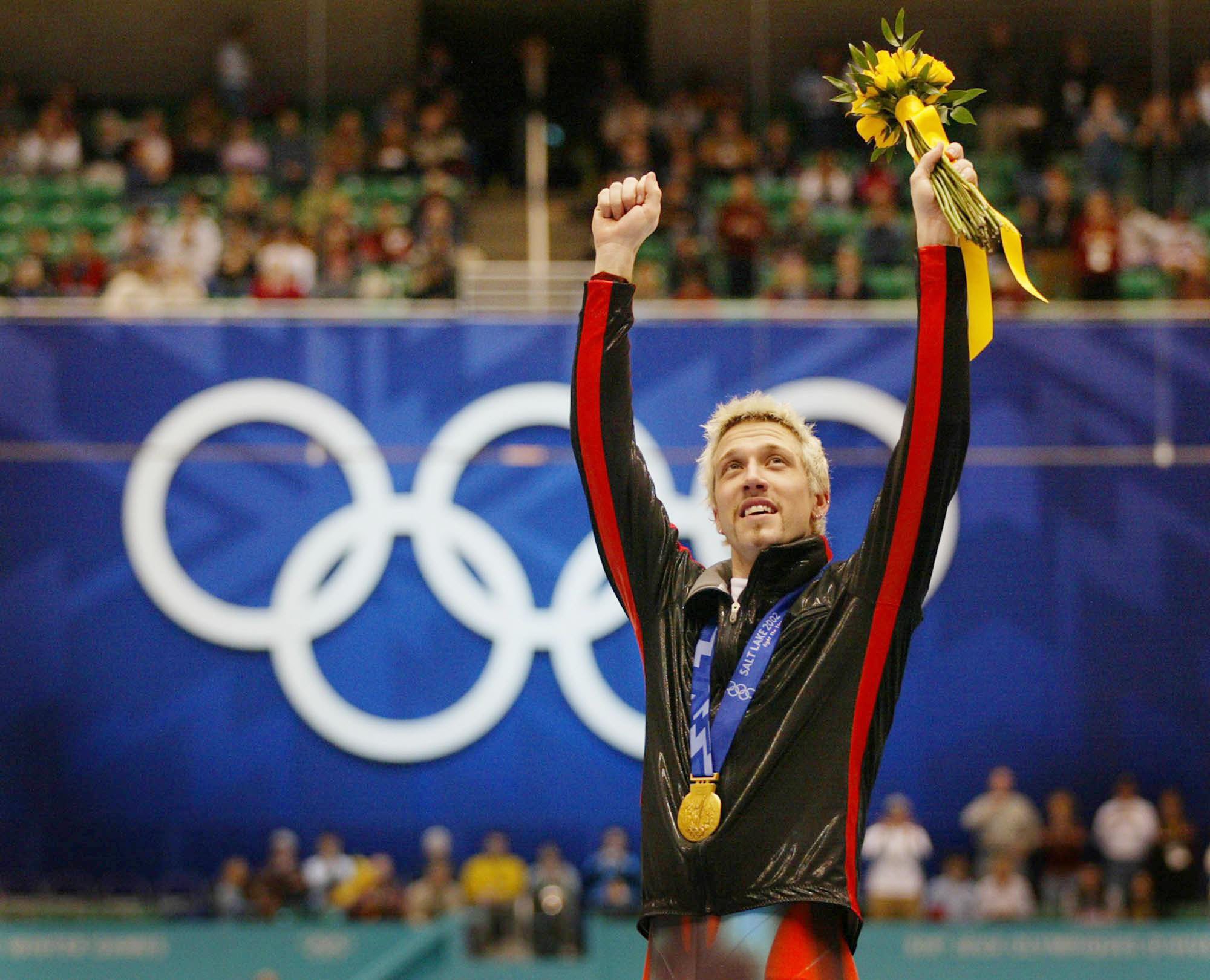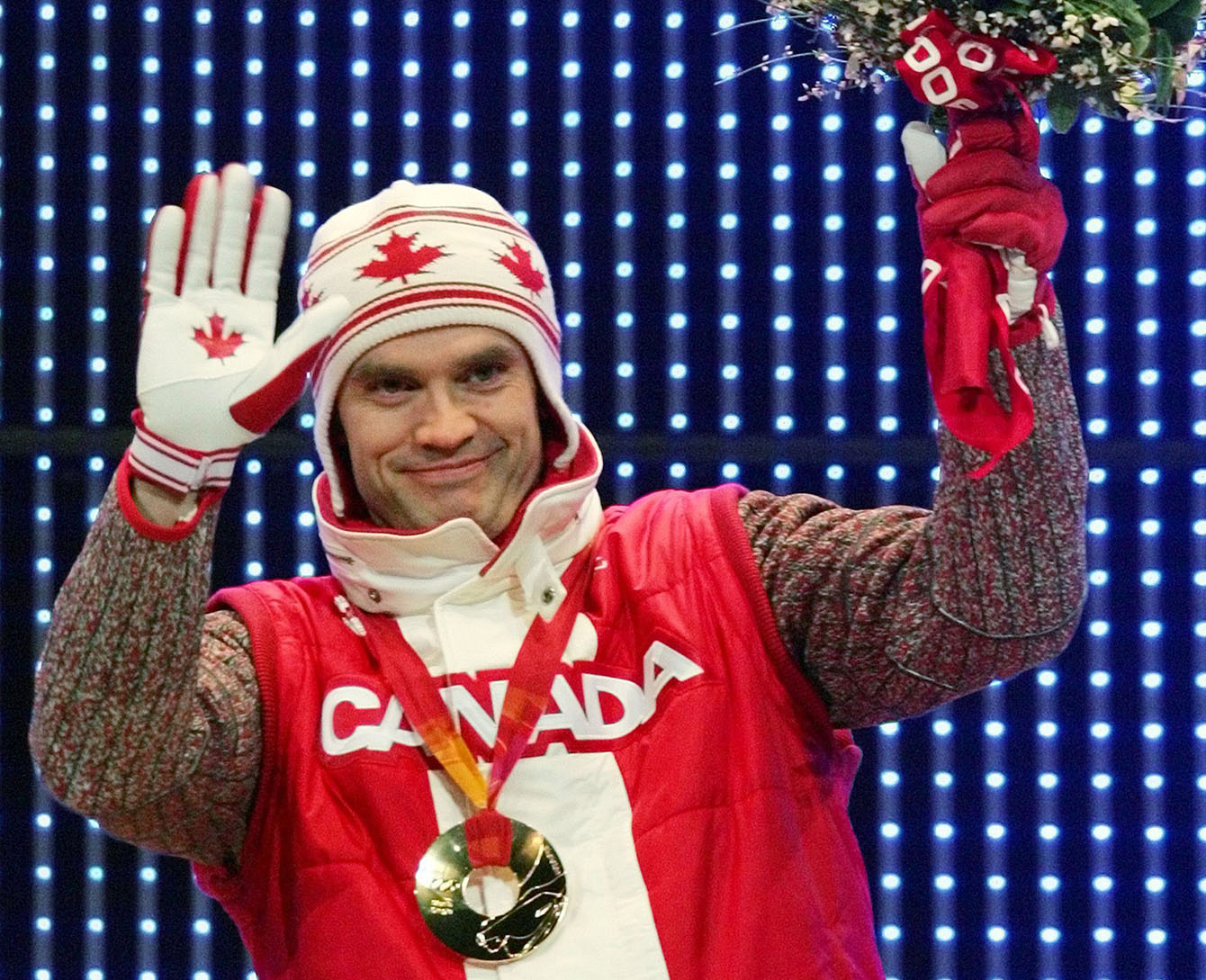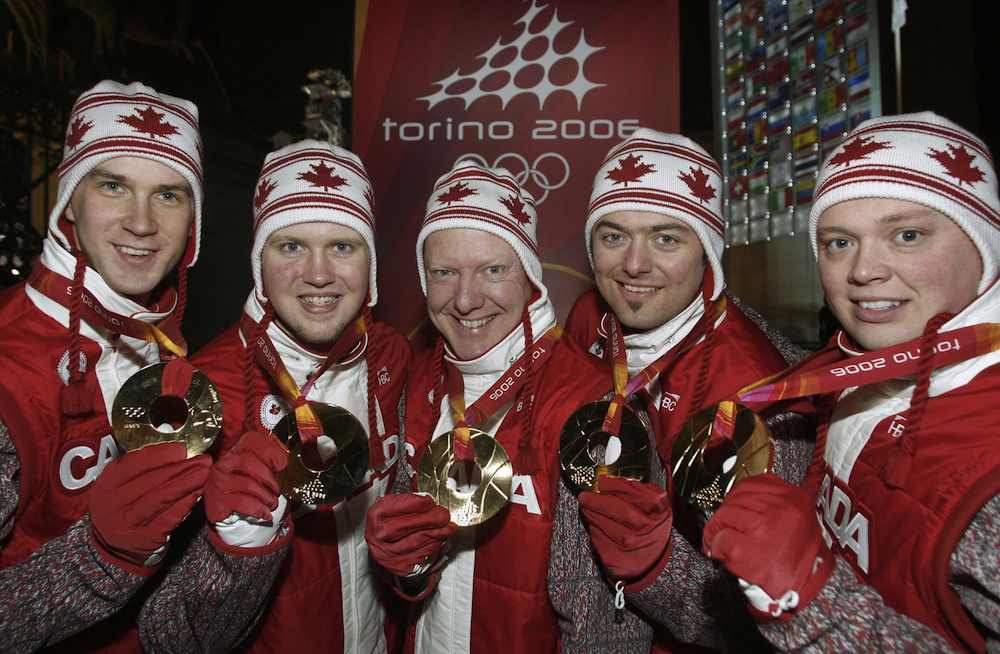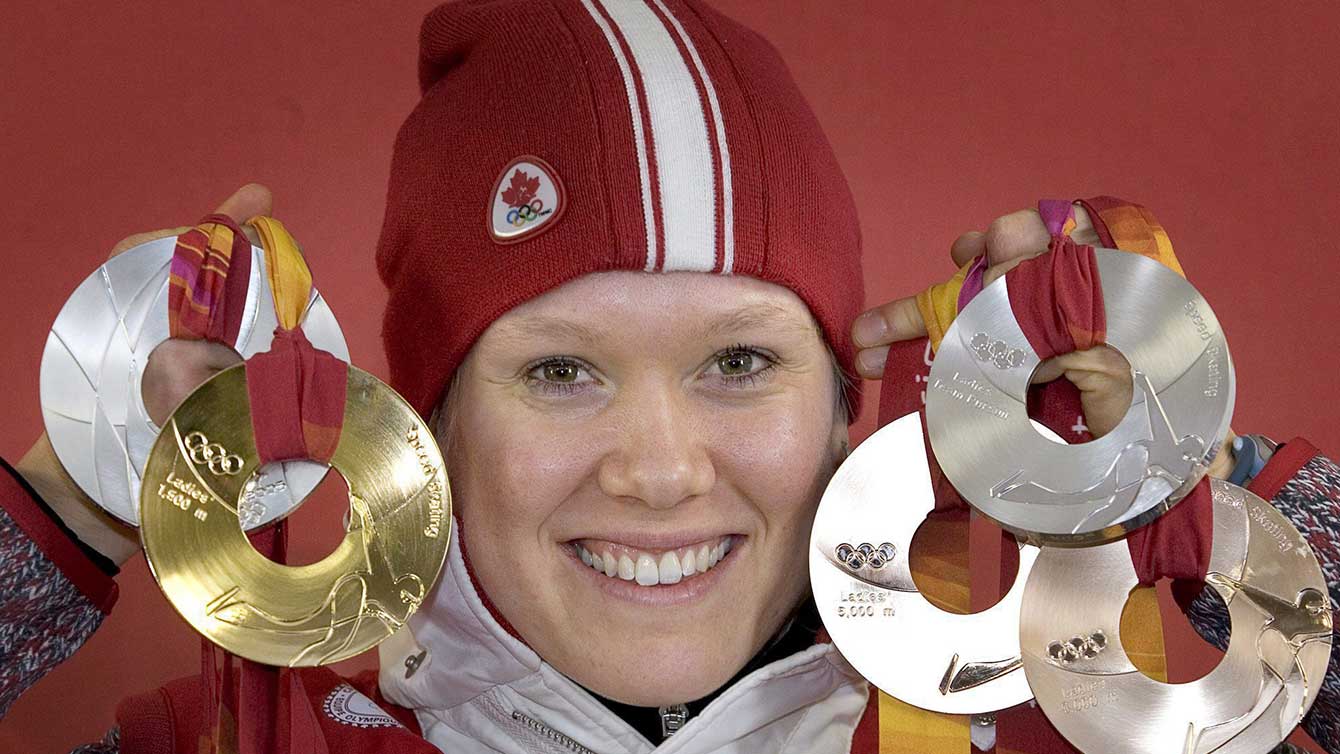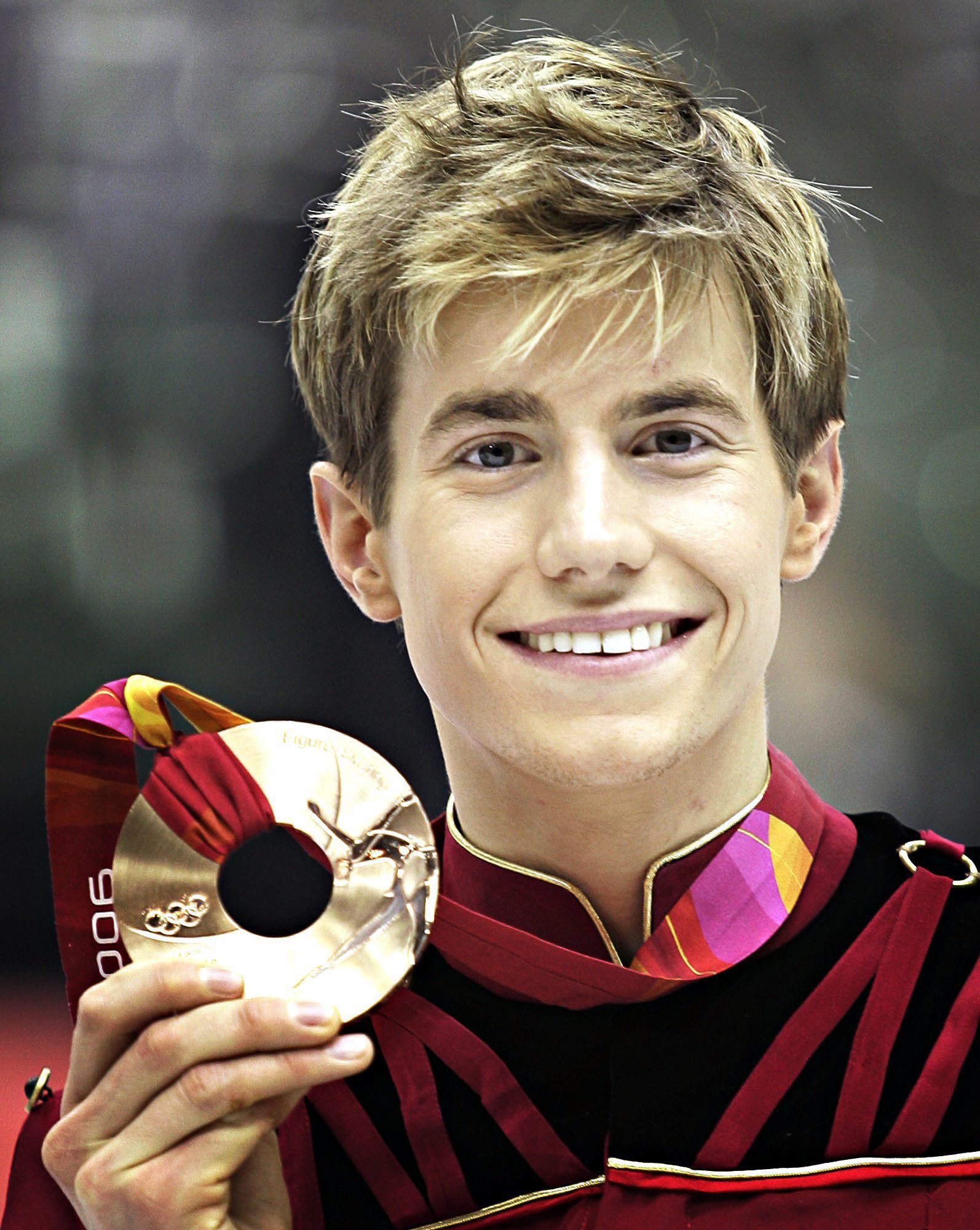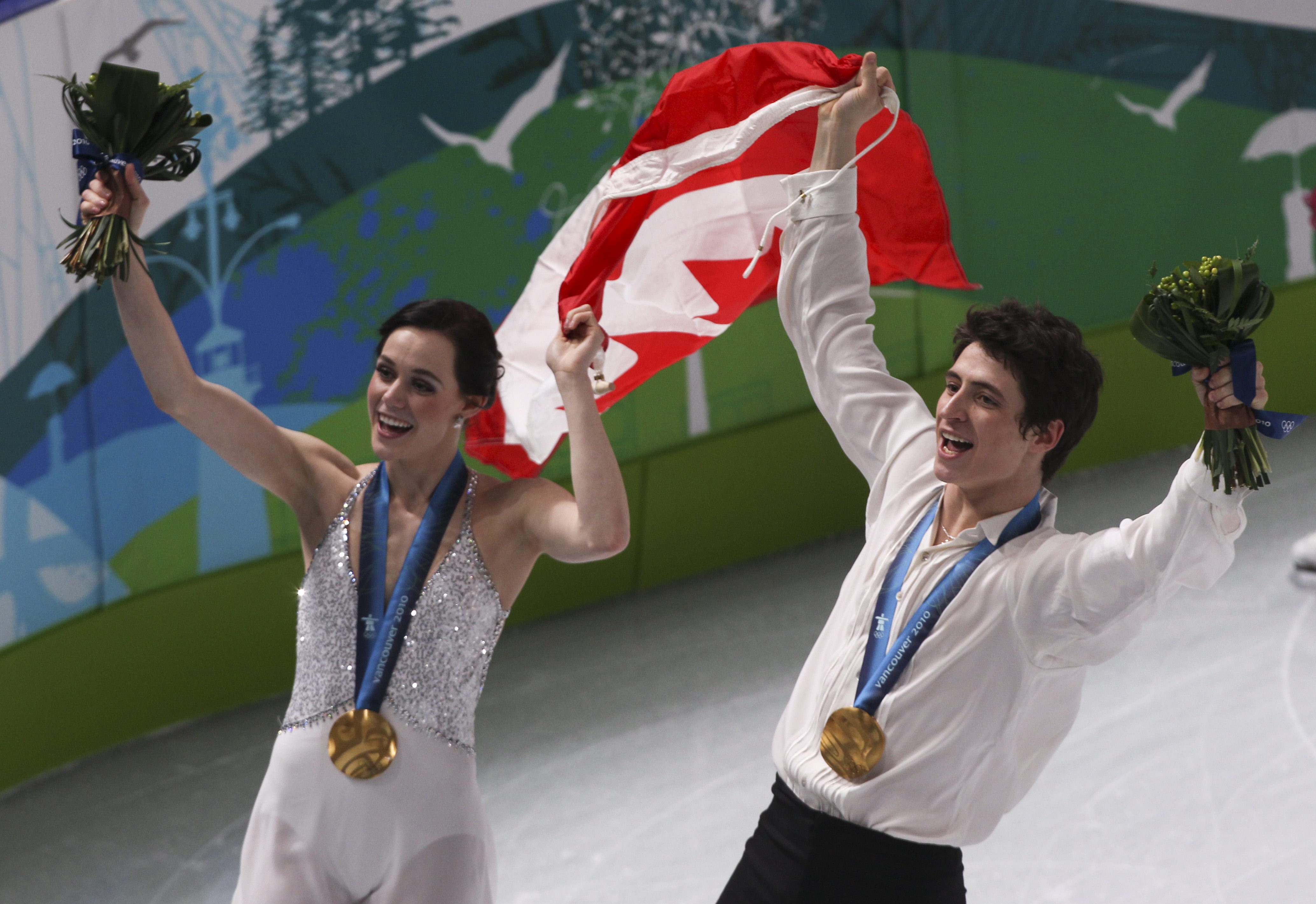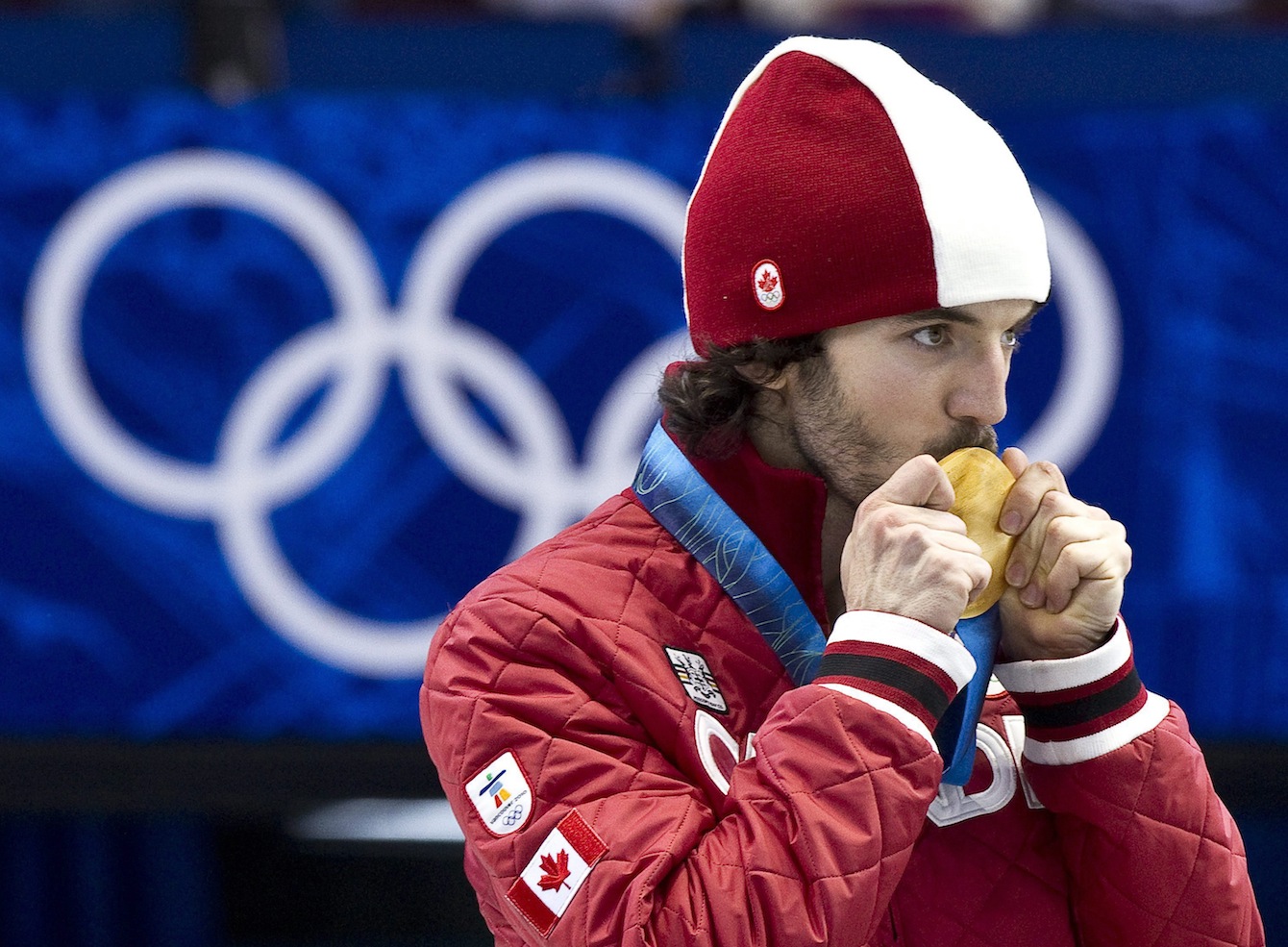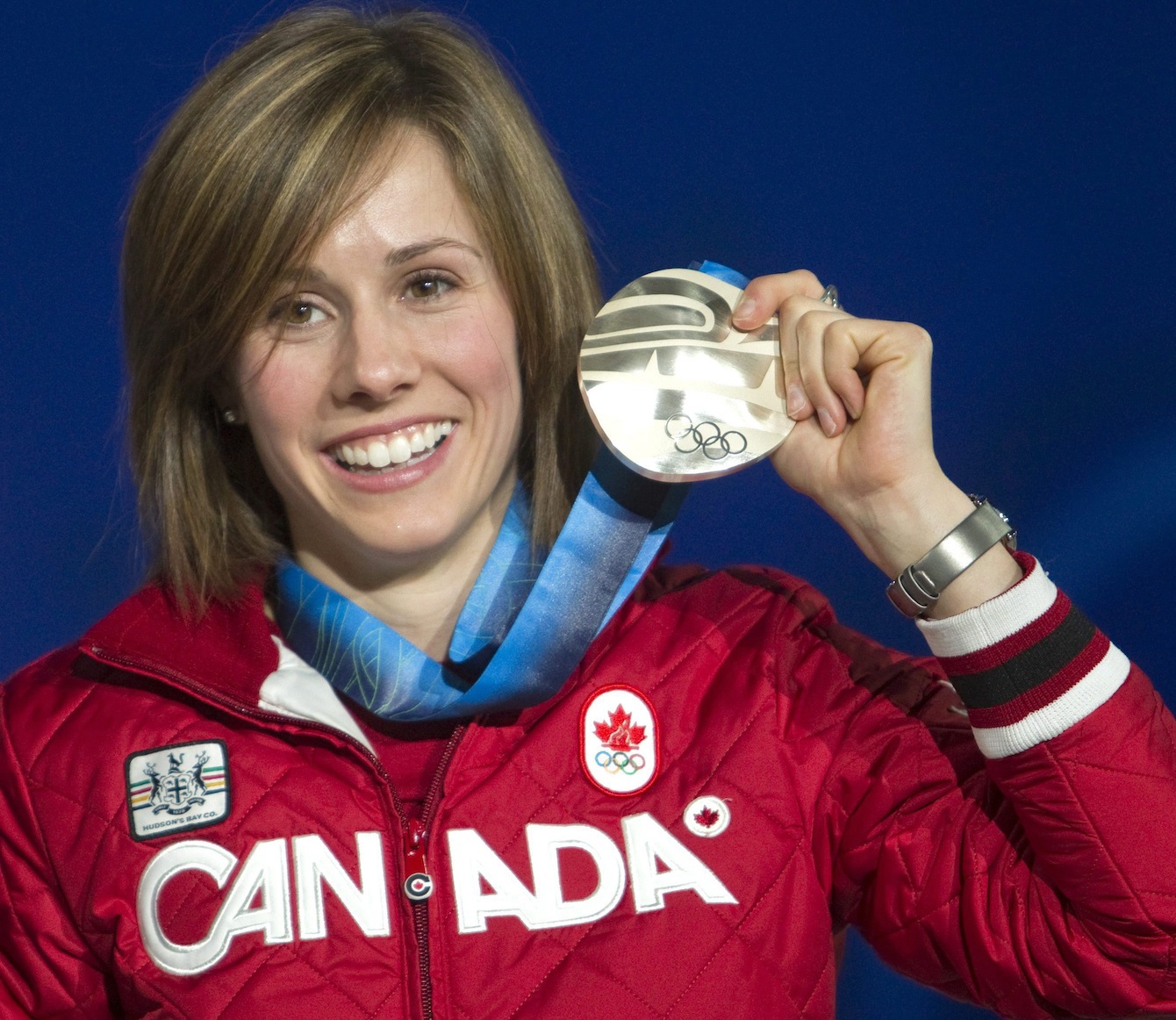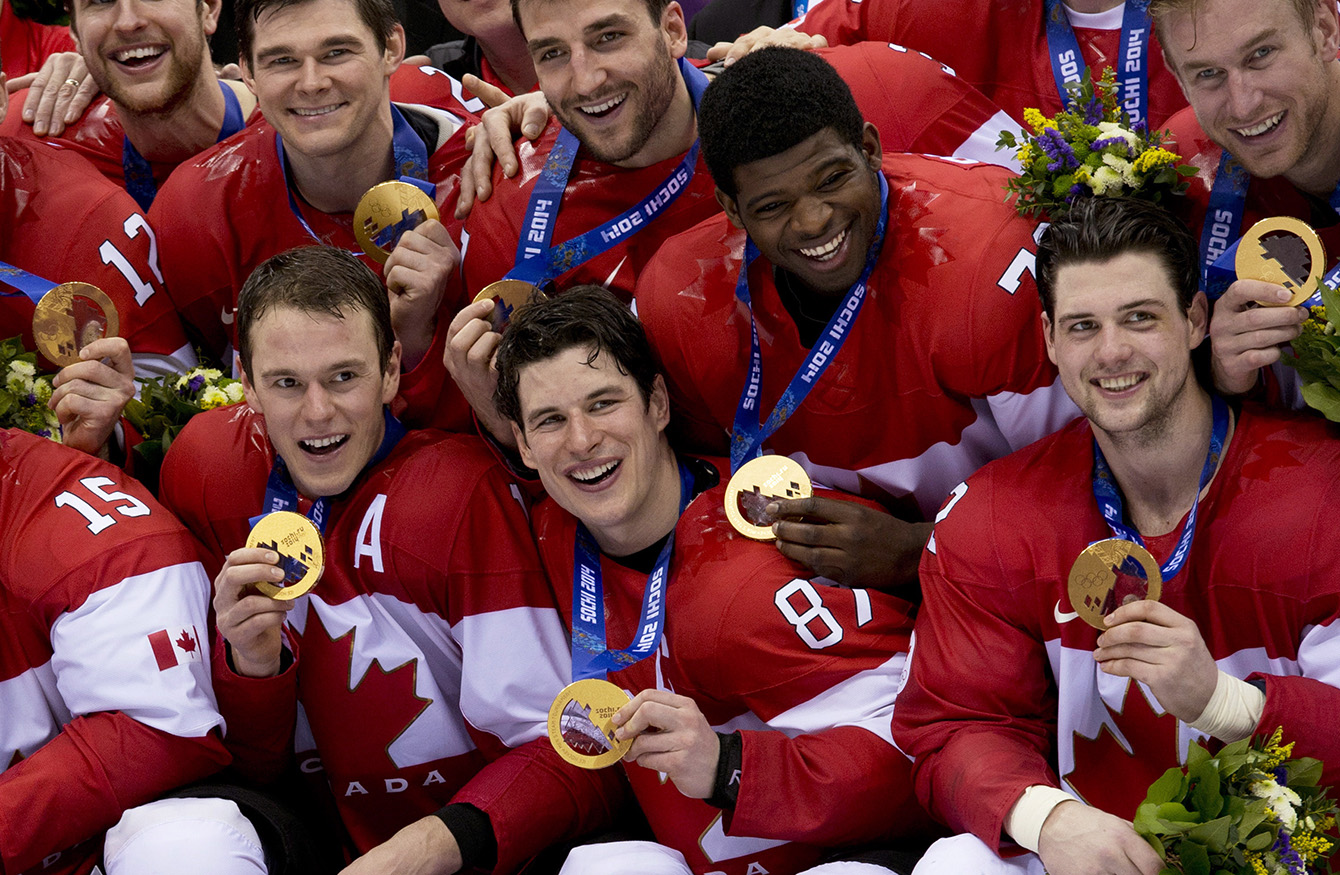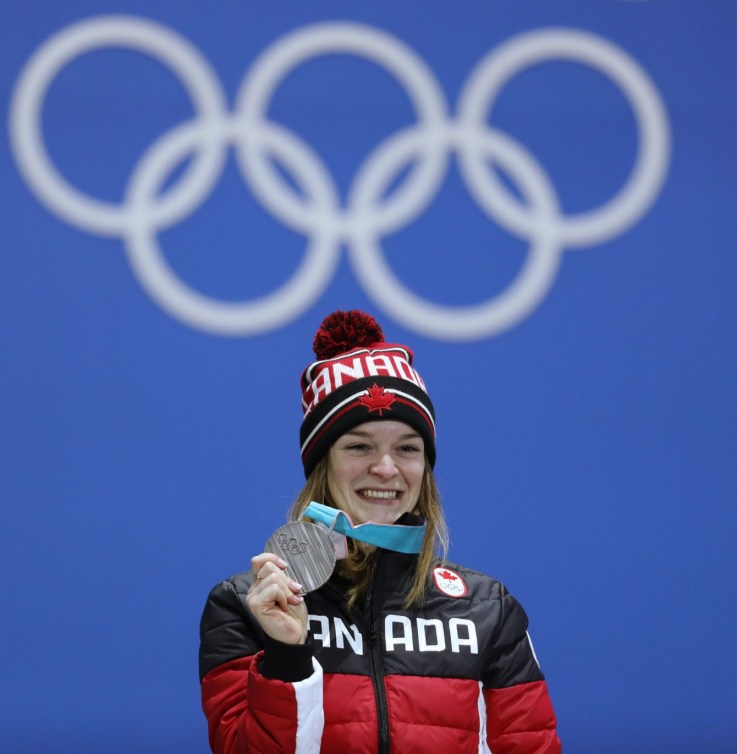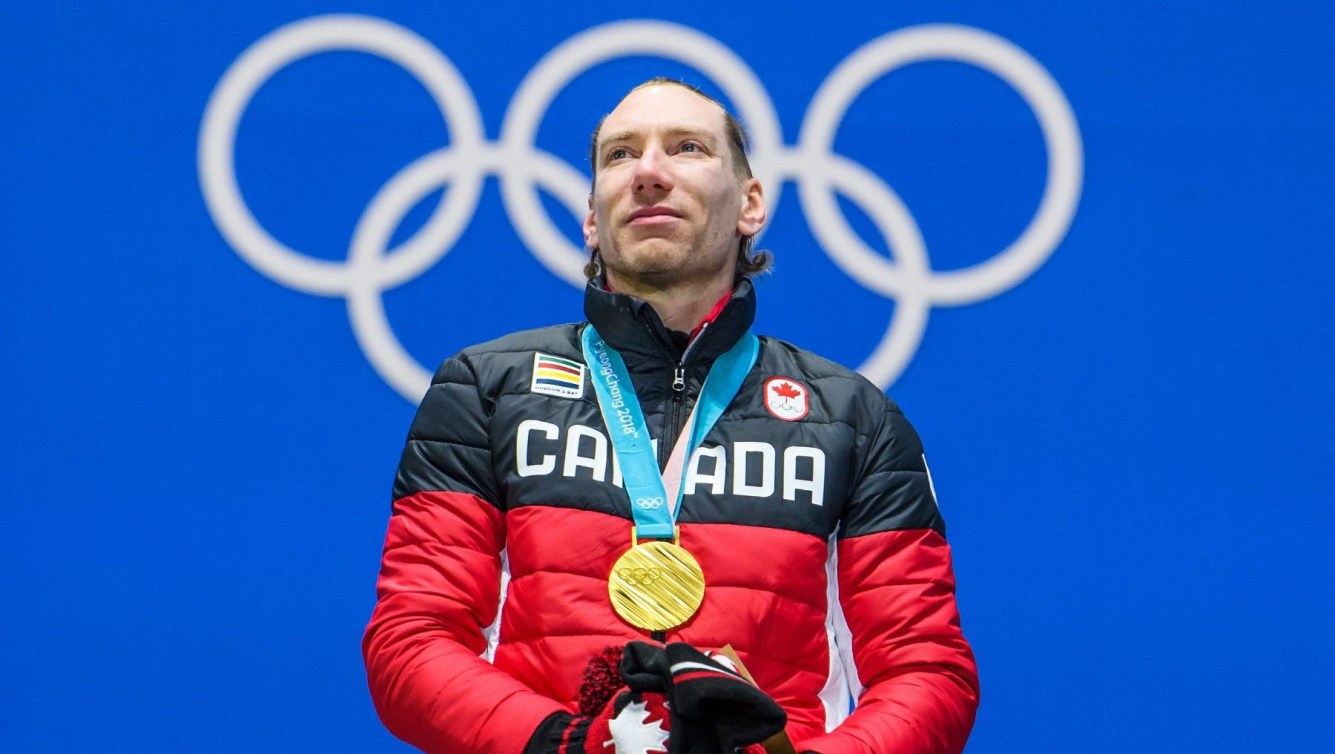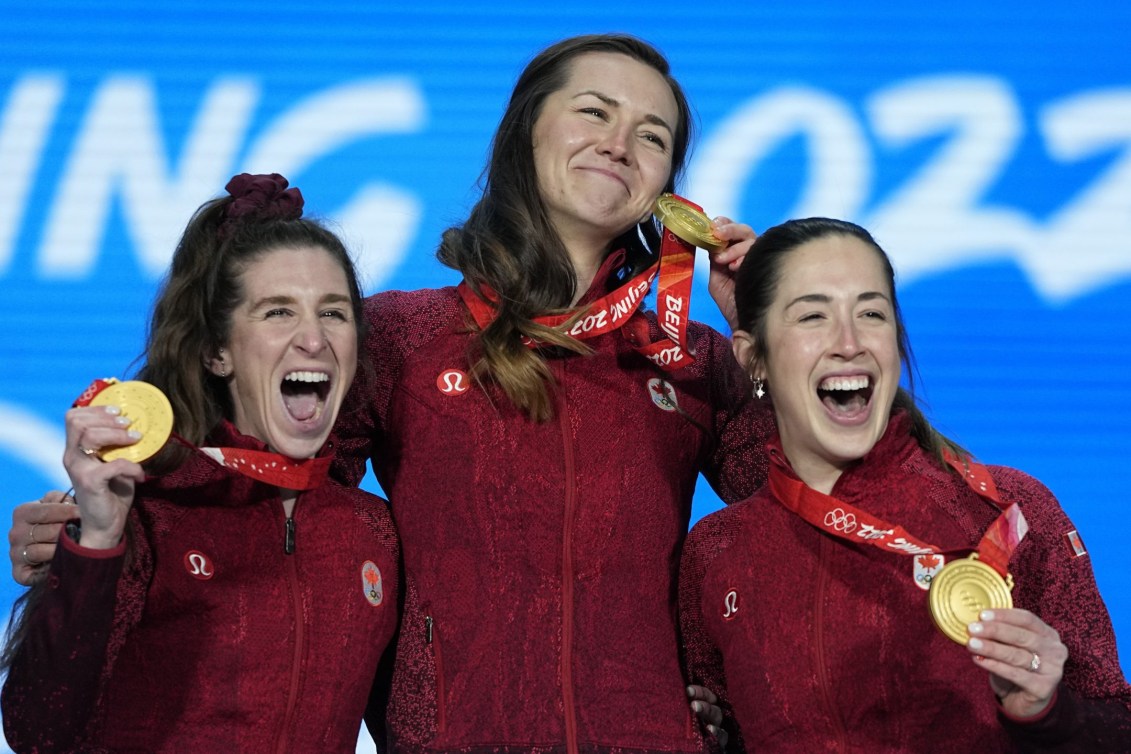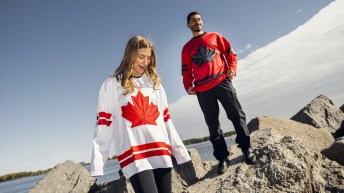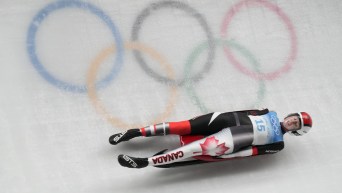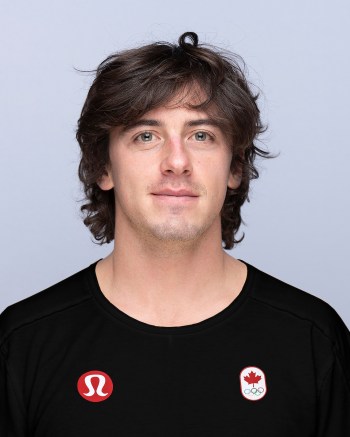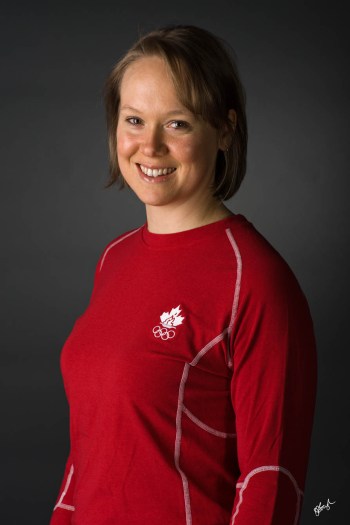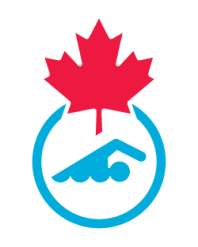Medal memories: Looking back at medal designs from the Olympic Winter Games
Updated July 15, 2025
They kiss them, they bite them, they pose with them.
Athletes celebrating with the Olympic medals they won will always produce iconic images—particularly so when the design of those medals includes an iconic element.
While the design of the medals may have been very conservative and traditional in the early days of the Olympic Winter Games, in recent decades they have become extravagant creations by some of the world’s most praised artists. Here’s a look at what Winter Olympic medallists have been awarded over the last 30+ years.
Calgary 1988
At its first home Olympic Winter Games, Team Canada won two silvers and one bronze in figure skating as well as two bronze medals in alpine skiing.
The front of the medal created by German designer Friedrich Peter sported the Games’ emblem, a hybrid between a maple leaf and a snowflake. Its back showcased the profile of an athlete wearing an olive wreath and in the foreground was the representation of an Indigenous person whose headdress feathers were composed of ski poles, a bobsled, skis, skates, a hockey stick, a luge sled and a rifle.
Albertville 1992
Team Canada had its best Olympic Winter Games medal haul in 60 years, including two gold medals.
The Olympic medals, made for the first time out of glass, were all hand cut by the craftsmen at Maison Lalique and set within the gold, silver and bronze metal. On the front were the five Olympic rings, with a valley in the background that gave the impression of perspective. It was on the back where the rings were engraved in the colourless glass with the lies symbolizing the French mountains. Let’s hope no athlete dropped their medal!
Lillehammer 1994
Team Canada’s medal total grew once again, this time to lucky 13.
Following in the footsteps of the French hosts two years earlier, the Norwegians also incorporated another material into the traditional metals used for Olympic medals. Granite, or specifically sparagmite, is present in large quantities in Norway and represents that which the country’s inhabitants love most: nature. While the front is rather classic with the Olympic rings, the work of designer Ingjerd Hanevold in the back includes the pictogram for the sport in which the medal was awarded.
Nagano 1998
Four years later, Canada improved its record haul by winning 15 medals, including six golds in Japan.
Honoring local traditions, the 1998 Olympic Winter Games medals were created using Japanese lacquer techniques. On one side we see the rising sun surrounded by an olive wreath and the emblem of the Games. On the other side, it is the mountains of the Sinshu Prefecture that are honored. I do not know about you, but just by staring at the Nagano medal, I feel more zen.
Salt Lake City 2002
With 10 new events in the 2002 Olympic program, Team Canada took the opportunity to raise its record medal count to 17.
On the front of the medals, we see a man rising from the flames with a torch, representing the resilience of the human spirit and the power to inspire. The phrase “Light the Fire Within” is engraved on the front of the medal, marking the first time that a Games motto was written on an Olympic medal.
At the back, Nike, the Greek goddess of victory, holds a small leaf, symbolizing the olive wreaths that were presented to the winners of the Games in ancient Greece. Within Nike’s embrace is a representation of the event associated with the medal. At the base of the ribbon loop is the Roman number XIX for the 19th edition of the Olympic Winter Games. Every medal had a slightly unique shape, designed in the form of river rocks, such as those found in Utah waters to make them part modern and part rustic. It is the first time since Sarajevo 1984 that the medals are not perfectly round.
Turin 2006
For the seventh consecutive time, Canada broke its medal record in 2006, achieving 24 podium finishes and reaching the top three in the medal table.
Some saw it as a donut, others viewed it as a CD. The Turin 2006 medals stood out for their shape rather than what was engraved on it. At the front of the 107mm diameter disc—which is, by the way, the largest in Winter Olympic history and almost 25% larger than those from four years earlier—we find the graphic elements of the Games while at the back is the event in which the medal was won. The hole in the centre was mean to reveal the place where the heart beats.
Vancouver 2010
Unlike the first two times that the Olympic Games were held on Canadian soil and Canada won no gold medals, in 2010 the country had a record number of first place finishes. The 14 gold medals were the most ever by any country at a Winter Games, while the 26 total medals became another national record.
The wavy shape of the medals was designed by Omer Arbel, an industrial designer and architect from Vancouver, and required the medal to be struck nine times as part of the 30-step manufacturing process. The inspiration for these medals comes from artwork of an orca whale by Corrine Hunt, an Indigenous artists from the Raven Gwa’wina clan on Vancouver Island. Each of the medals has a different section of the artwork carved on its front side, which makes them all unique.
Sochi 2014
Team Canada collected 25 collected 25 medals at Sochi 2014, which stood for four years as the country’s best performance at an Olympic Winter Games held on foreign soil.
The patchwork quilt mosaic found at the centre of the medals (made of gold, silver, bronze and polycarbonate) is designed according to the tradition of various cultures and ethnicities in Russia. The medal-cutting represents the landscape of Sochi with its snow-capped peaks that reflect the sun’s rays on the sandy beaches of the Black Sea coast.
Since they do things like nowhere else in Russia, the seven gold medallists on February 15, 2014 received a medal that contained meteor dust from the meteor that landed in Russia one year earlier. Yes, seven Olympic champions received a medal made of materials from space! Unfortunately for us, no Canadian climbed to the top of the podium that day.
PyeongChang 2018
Team Canada sent its biggest Winter Olympic team ever—225 athletes—and won its most Winter Olympic medals ever—29—at PyeongChang 2018.
South Korean designer Lee Suk-woo was inspired by the texture of tree trunks. The front of the medals featured the Olympic rings and dynamic diagonal lines intended to reflect both the history of the Games and the determination of the participants. On the back of the medals was the discipline and event in which the medal was won, as well as the Games emblem.
The medals also incorporated Hangeul—the Korean alphabet—around their edges, with a series of consonants symbolising the efforts of athletes from around the world who came together to compete as one.
The ribbon on which the medals hung was created using gapsa, a traditional South Korean fabric, and featured embroidered Hangeul patterns.
Beijing 2022
The medals awarded at Beijing 2022 were named “Tong Xin”, meaning “together as one”. The design featuring five rings and centre was based on Chinese ancient jade concentric circle pendants—with the five rings representing the Olympic spirit to bring people together. The classic shape of the medals also resembled the jade-inlaid medals awarded at Beijing 2008, fitting for the city that became the first to host both the Summer and Winter Games.
On the front, the Olympic rings are surrounded by patterns evoking ice, snow, and clouds. On the back, the Beijing 2022 emblem was at the centre, with the Chinese name of the Games engraved around it.

